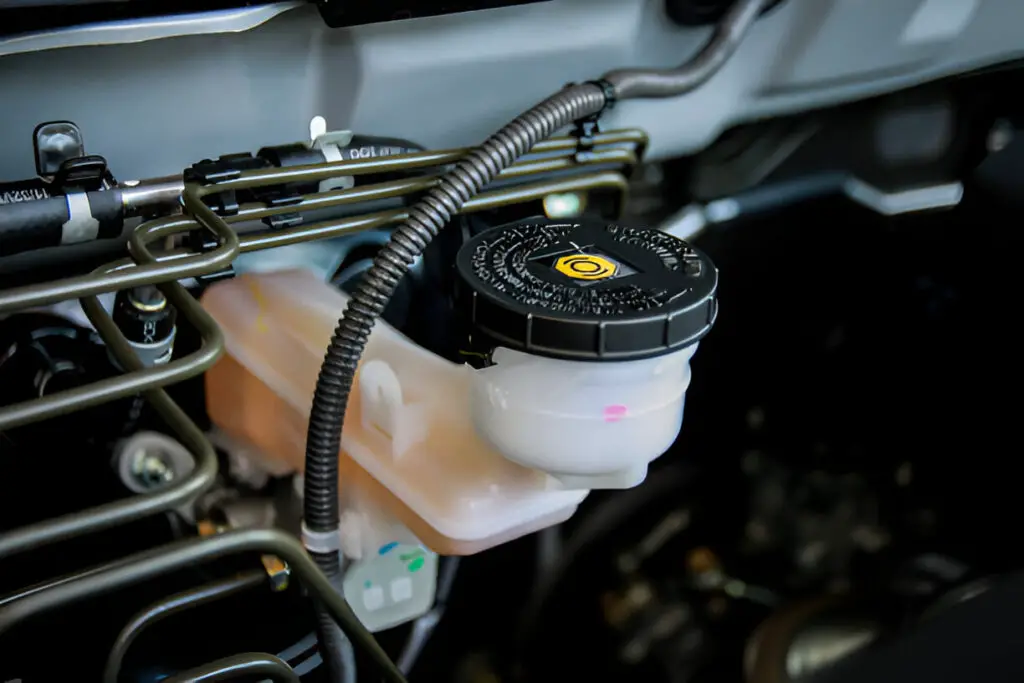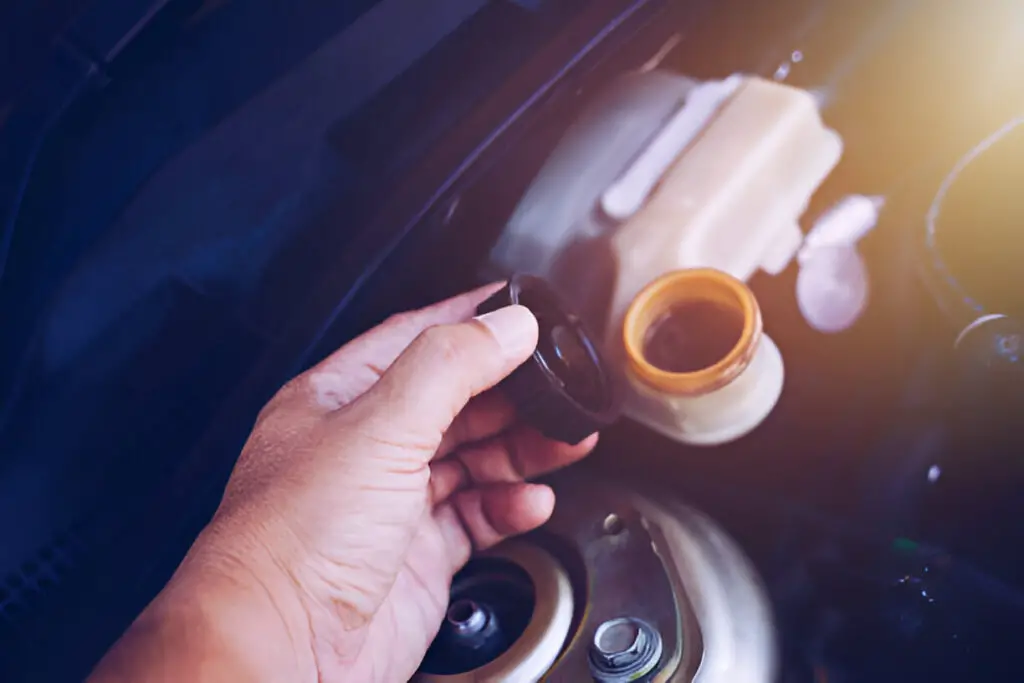Brake fluid has two boiling points: the dry boiling point, which applies to fresh, uncontaminated fluid, and the wet boiling point, which refers to fluid that has absorbed water over time. The wet boiling point is significantly lower due to brake fluid’s hygroscopic nature, which can lead to reduced braking efficiency under heat.
Brake fluid is an essential component of any vehicle’s braking system, transferring force from the brake pedal to the brake calipers. However, its boiling point plays a critical role in ensuring reliable performance, especially under intense braking conditions. Two key terms often discussed when evaluating brake fluid are the wet boiling point and the dry boiling point. These terms refer to the temperature thresholds at which the fluid boils under different conditions, directly affecting braking efficiency and safety.

Contents
What Is the Dry Boiling Point?
The dry boiling point is the temperature at which fresh, uncontaminated brake fluid boils. It reflects the optimal performance of the brake fluid as it is free of any water contamination. Higher dry boiling points are crucial for high-performance or racing vehicles that experience extreme braking heat.
What Is the Wet Boiling Point?
The wet boiling point refers to the temperature at which brake fluid boils when it contains approximately 3.7% water by volume. Brake fluid is hygroscopic, meaning it absorbs moisture from the environment over time. As water contamination increases, the boiling point lowers, reducing the fluid’s effectiveness in high-heat situations. This is particularly critical in vehicles driven in humid climates or infrequently maintained.
Brake Fluid Wet Vs Dry Boiling Point
Here’s a side-by-side comparison of the two boiling points:
| Aspect | Dry Boiling Point | Wet Boiling Point |
|---|---|---|
| Definition | Temperature at which fresh brake fluid boils. | Temperature at which brake fluid boils after absorbing 3.7% water. |
| Condition | Represents optimal fluid performance. | Represents performance after moisture contamination. |
| Performance Impact | Higher for effective braking under extreme heat. | Lower, leading to a higher risk of brake fade. |
| Typical Values | DOT 3: ~401°F, DOT 4: ~446°F, DOT 5.1: ~518°F | DOT 3: ~284°F, DOT 4: ~311°F, DOT 5.1: ~356°F |
| Relevance | Important for new or freshly serviced brake systems. | Important for older or infrequently serviced systems. |
Why Does Brake Fluid Absorb Water?
Brake fluid absorbs water due to its hygroscopic nature. This property is necessary because it prevents water from pooling in the braking system, which could lead to corrosion or freezing in colder temperatures. However, as moisture mixes with the brake fluid, it lowers the boiling point and compromises performance under high-heat braking.
Impact of Low Boiling Points on Braking Performance
When brake fluid boils, it forms vapor pockets within the braking system. Since vapor is compressible, it reduces the hydraulic efficiency of the system, leading to brake fade. This manifests as a spongy brake pedal or, in severe cases, a complete loss of braking power.
Brake Fluid Types and Their Boiling Points
The type of brake fluid determines its boiling points, with higher-spec fluids designed to withstand greater thermal stress. Here are the typical boiling points for various DOT-rated brake fluids:
| Brake Fluid Type | Dry Boiling Point (°F) | Wet Boiling Point (°F) |
|---|---|---|
| DOT 3 | ~401°F | ~284°F |
| DOT 4 | ~446°F | ~311°F |
| DOT 5.1 | ~518°F | ~356°F |
| DOT 5 (Silicone) | ~500°F | ~356°F |
- DOT 3: Common in everyday vehicles with moderate braking demands.
- DOT 4: Found in higher-performance vehicles and some trucks.
- DOT 5.1: Designed for high-performance and racing applications.
- DOT 5: Silicone-based, non-hygroscopic fluid used in specialty vehicles.

Preventing Brake Fluid Degradation
To maintain optimal performance, brake fluid should be checked and replaced regularly. Most manufacturers recommend replacing brake fluid every 2-3 years or more frequently for performance vehicles. Here are additional tips to prevent degradation:
- Use High-Quality Fluids: Select fluids with high boiling points suitable for your driving conditions.
- Minimize Exposure to Moisture: Store brake fluid in tightly sealed containers.
- Flush and Replace Periodically: Regularly bleed the brakes to remove old, water-contaminated fluid.
- Inspect the System: Check for leaks or damage that could exacerbate contamination.
Frequently Asked Questions
Here are some FAQs about brake fluid boiling points –
1. Why does brake fluid have both wet and dry boiling points?
Brake fluid absorbs water over time, lowering its boiling point. The dry boiling point reflects the fluid’s performance when new, while the wet boiling point indicates its performance after water contamination.
2. How often should I replace my brake fluid?
Most manufacturers recommend replacing brake fluid every 2-3 years to maintain its boiling point and prevent brake fade.
3. Can I mix different types of brake fluid?
Mixing DOT 3, DOT 4, and DOT 5.1 fluids is generally safe but not recommended as it may dilute performance. However, DOT 5 silicone-based fluid should never be mixed with other types.
4. How does water contamination affect braking performance?
Water lowers the boiling point of brake fluid, increasing the risk of vapor formation and brake fade under heavy braking.
5. What type of brake fluid is best for high-performance driving?
DOT 5.1 brake fluid is ideal for high-performance vehicles due to its high boiling points and compatibility with ABS systems.
Conclusion
Knowing the difference between wet and dry boiling points is crucial for maintaining brake performance and safety. While the dry boiling point showcases the brake fluid’s capabilities when new, the wet boiling point reflects its performance after real-world use.
Routine maintenance and using the right type of brake fluid for the vehicle’s needs can significantly enhance braking efficiency and safety. However driving daily or pushing limits on a track, keeping your brake system in peak condition ensures reliable stopping power.